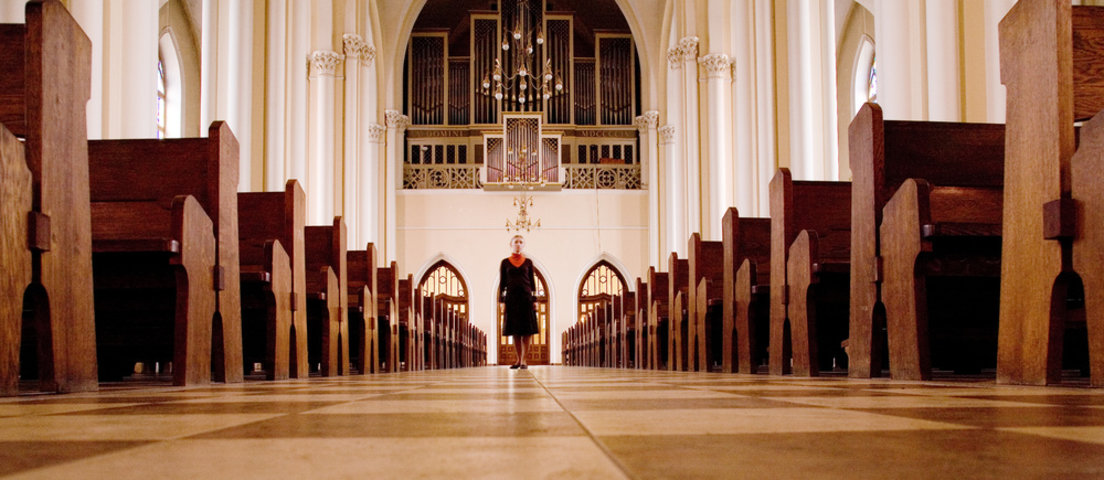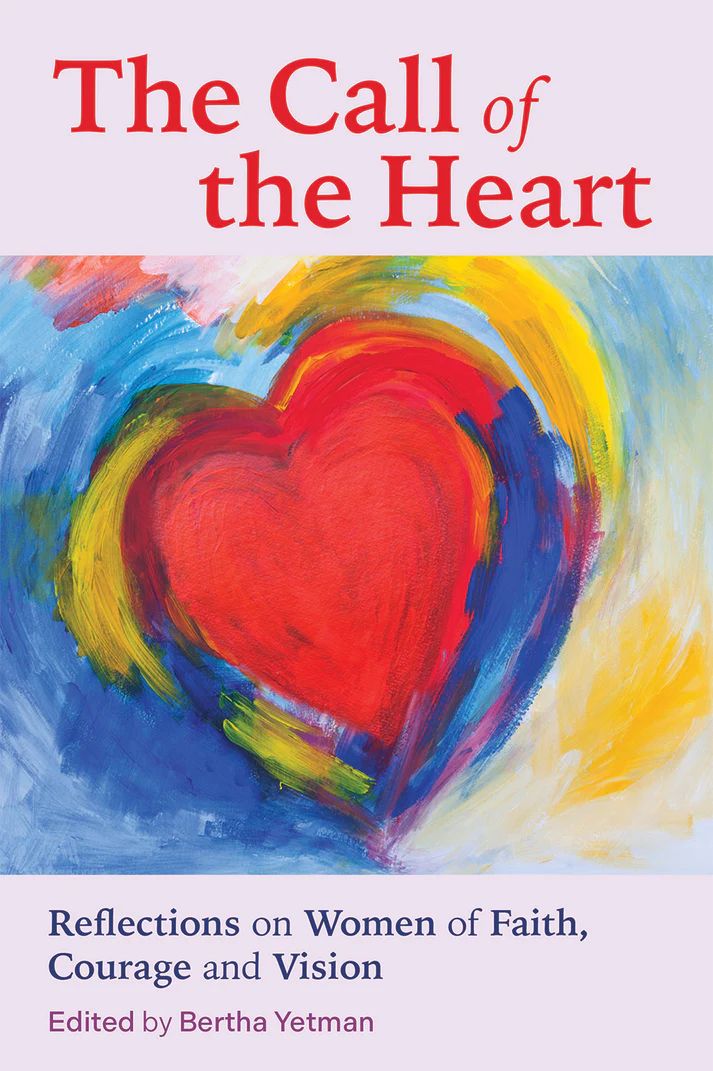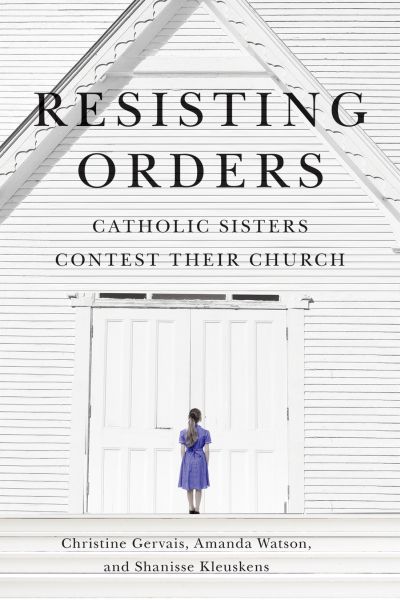
Visitors to this site might wish to know more about the members of the Office of Religious Congregations for Integral Ecology (ORCIE-BCRÉI.)
Who are the people who envisioned the need, and since 2021, do the work, to fulfill the mission set out as: “skillfully engaging with policymakers creating maximum impact for change.”
Among the over two dozen Catholic religious congregations that have donated to the initiative, only two “institutes of consecrated life” are comprised of males. By far, the majority of ORCIE members, supporters and activists are female members of religious congregations.
In the early summer of 2025, two new books were published that reveal detailed accounts of the contributions of female religious in Canada, as well as their on-going struggles to remain true to their various charisms.

“The Call of the Heart: Reflections on Women of Faith, Courage and Vision” (Novalis, 2025) edited by Dr. Bertha Yetman, details the lives of eleven women “who make or who have made a difference” (page 9.) It is difficult to guess why and how these specific women were chosen among so many – the editor has said her choices were “more random and unsystematic than you would imagine!”
Eight were nuns or sisters, consecrated members of religious communities, and three belong(ed) to religious communities that emerged in the Catholic Church since Vatican II. (A half dozen of the chapters describes sisters belonging to congregations which are ORCIE-BCRÉI members.)
The first grouping of chapters, entitled “Breaking Frontiers” describes the life of three sisters who served as “missionaries.” Newfoundland-born Sisters Mary Elizabeth Bonia SMSM (who served in Jamaica) and Sister Margie Conroy RSCJ (who served in Uganda and Kenya) are described – while I shamefully admit to not knowing that Sara Riel SGM was a sister of the more famous Louis Riel of the Red River Rebellion. Before her early death at age 35, Sara served a dozen years in Île-à-la-Crosse (northern Saskatchewan.) Author Ellen Dobrowolski, herself a Montreal-based Metis doctoral candidate, refuses to “white-wash the coercion” of colonialism that used Christianity as its “ideological arm” while praising the dedication of this first Metis Grey Nun missionary – a woman who was highly regarded by the people through using her ability to speak both Cree and Michif.
A second grouping “Education, Justice and Charity” describes Mother Estelle Nolan, IBVM (who brought spiritual fulfillment through teaching Dante); Sr. Olivette Sesk PVBM (who brought music to children and then prison inmates); Sr. Kathrine Bellamy RSM (recipient of the Order of Canada and a PhD in historical musicology); feminist theologian Sr. Ellen Margaret Leonard CSJ; as well as two lay women: my late friend Janet Somerville (editor of The Catholic New Times and later General Secretary of the Canadian Council of Churches) and Jean Mahoney (President of various nursing and health organizations as well as the Catholic Women’s League.)
Two women of “Silent Encounter” complete the third grouping of this volume. Sr. Elaine MacInnes OLM became a Zen master in Japan, later bringing meditative ministry into prison chaplaincy, and Lucinda Vardey founded a contemplative order for Catholic lay women.

A second and quite different new book is “Resisting Orders: Catholic Sisters Contest Their Church” (McGill-Queen’s University Press, 2025) by Christine Gervais, Amanda Watson and Shanisse Kleuskens. This work is based on extensive interviews with twenty-six sisters (and six former sisters) ranging in ages from 49 to 96, from eight different congregations, that were held between December 2008 and June 2011. Some of the results were earlier collected in Christine Gervais’ “Beyond the Altar: Women Religious, Patriarchal Power, and the Church” (Wilfred Laurier University Press, 2018.) Again, the sample could not claim to be scientifically broad enough to generalize the views of all religious – the women interviewed volunteered – yet pseudonyms were used, and their identities were (frustratingly) kept secret for fear of “blowback” (page 205). By the time of the 2025 release, some thirteen interviewees have died.
The intent of “Resisting Orders” is “to analyze gender injustice in an institution” (page IX) in the context of a “colonial, hierarchical church” (page 5) where women find themselves as “insiders/outsiders” (page 8), that is, in “simultaneously privileged yet marginalized positions” (page 14).
Unlike in “The Call of the Heart,” “Resisting Orders” openly aligns with the view that, “Within the deep-rooted patriarchal structure of the Roman Catholic Church, women have been marginalized, degraded, and oppressed by hierarchical authorities, as well as systematically excluded from leadership, decision-making, and the sacramental system” (page 88). Yet, the authors take pains to respect those interviewed: women who were not passive recipients of injustice, but members of congregations which carved out their own spheres of influence; women who started and ran hospitals, schools, and retreat centres; who pioneered social outreach projects; who wisely shifted their congregations from diocesan to pontifical congregations so as to distance themselves from ecclesial control.
This book is organized by themes – not by the interviews themselves. Topics include the women’s various views on categories of inquiry described by the authors as feminism, celibacy and heterosexuality (including within their own communities), clerical abuse, reproductive justice and the criminalization of women’s ordination. Critical of many aspects of church life and rules, the sisters interviewed all embraced the move away from institutional ministries where women flourished in pre-Vatican II times, saying “we’re called to be midwives of new ways” (page 209).
Perhaps outspoken women of faith are those providing new ways forward in the institutional renewal of the Catholic Church? Sr. Elizabeth Davis RSM, provides a reflection on synodality as the final chapter in “The Call of the Heart.” As one of the 54 female voting delegates at the 2023-24 Synod on Synodality in Rome (and appointed by the International Union of Superiors General rather than the Canadian bishops) Davis has been a major advocate – and critic – of the synodal path thus far. She calls for more “focus on the intersections of sexuality, gender, race, ethnicity, class, disabilities, and environmental issues with patriarchy, hierarchy, marginalization, poverty, oppression of women and members of the LGBTQ+ communities, and exploitation of the Earth” (page 125).
These intersections reflect what Pope Francis’ concept of “integral ecology” means to the members of ORCIE-BCRÉI. We recognize that the call to ecological conversion is both personal as well as institutional. And we’re inspired by the vision and witness of holy women who came before us in such endeavours. Like them, we do not hide from these deep challenges, but echo the words of Benedictine Sr. Joan Chittister, “Do not be afraid to speak…Be afraid of what will happen to the whole truth if you don’t.”
AUTHOR

Joe Gunn serves as ORCIE-BCRÉI Treasurer.
This piece is part of ORCIE’s growing collection of reflections by members whose stories and reading journeys shape the heart of our mission. We invite you to reflect, respond, or suggest your own reading. Share your reflections here: Contact Us
